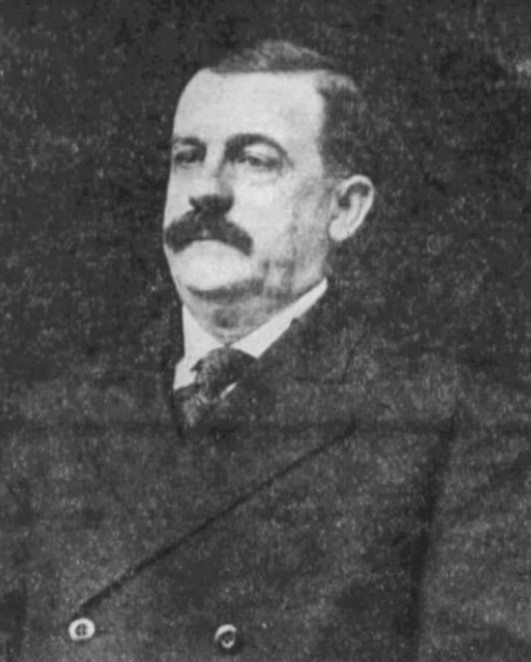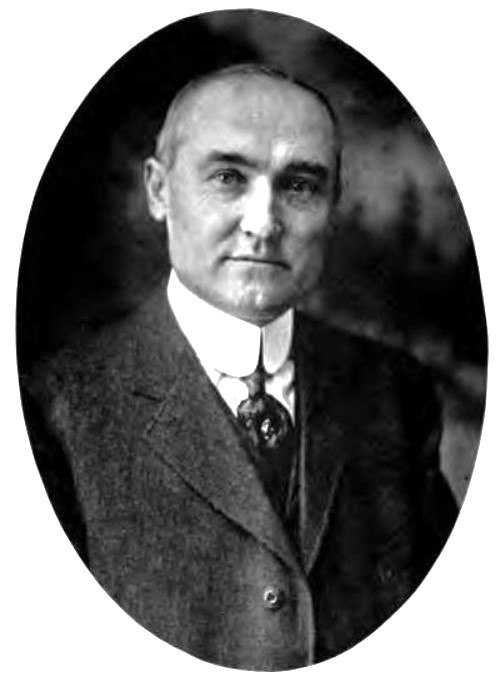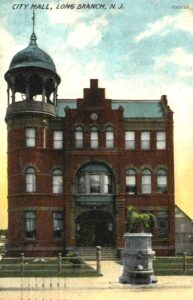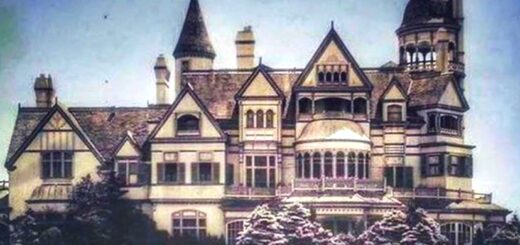Long Branch Mayor’s History
Please read & return — this section will be updated regularly:
There’s been a certain stability to the office of Long Branch mayor over the past 50 years. In that time just four men have held the city’s most important political position with all having been elected at least twice. As to the origins of the leadership post — that’s an altogether different story. Currently, the office is held by Mayor John Pallone, who won a second term in 2022 running unopposed.
Since Long Branch went official — more than 150 years ago — it’s had about 35 “mayors.” All of them men. But city voters have only been selecting their mayor regularly for less than 60 years (and briefly from 1904 to 1912).
For most of its political history (1867-1903, 1912-1966), Long Branch operated under a commission form of government — whose elected members then selected the mayor. Those commissions favored turnover in the chief executive’s seat. Beginning from when Long Branch became a city in 1904 and for some 60 years after only one mayor served more than a single term — Alton Evans (1936-1944). During each decade of the 1900s, 1910s and 1960s, the city had six different leaders.
While Long Branch has had a “mayor” since 1867, it was not until 1904 when C. Asa Francis — he with one of the city’s most sterling resumes — became the first city mayor to be elected by the voters. Later on in May 1966 — after another change in form of government — Paul Nastasio, Jr. became the second mayor to be popularly elected.
All subsequent city mayors have been voter elected. Today’s Long Branch government operates under the Faulkner Act with a Mayor and five-member City Council (Plan A), whose members are elected at-large in nonpartisan elections to serve four-year terms of office on a concurrent basis.
All during the late 19th century glory years of Long Branch — including the presidents, the grand resort hotels, the oceanfront bluff, the rich and famous residents — it was technically part Ocean Township. It was so from February 1849 (upon departing Shrewsbury Twp.) to April 1867 (when it incorporated as an independent borough) — governed by a five-member “Long Branch Commission.” As the first commission “president,” Francis Corlies, was also the first ”mayor.” This commission set-up, with later adjustments, would run things in Long Branch for nearly a century.
Mayors of Long Branch:
• John Pallone — 2018-present
• Adam Schneider — 1990-2018
• Philip D. Huhn — 1982-1990
• Henry R. “Skip” Cioffi — 1970-1982
• Paul Nastasio, Jr. — 1966-1970
• Vincent J. Mazza — 1965-1966
• Milton F. Untermeyer, Jr. — 1963-1965
• Thomas L. McClintock — 1961-1963
• J. Paul Kiernan — 1960-1961
• Daniel J. Maher — 1956-1960
• Alexander Vineberg, DO — 1952-1956
• J. William Jones — 1948-1952
• J. Paul Kiernan — 1944-1948
• Alton V. Evans — 1936-1944
• C. Dorman McFaddin — 1932-1936
• J. William Jones — 1928-1932
• Frank L. Howland — 1924-1928
• Clarence J. Housman — 1920-1924
• John W. Flock, Sr. — 1918-1920
• Marshall Woolley — 1916-1918
• Bryant B. Newcomb — 1912-1916
• Henry Joline — 1912
• Edwin W. Packer — 1911-1912
• Charles O. McFaddin — 1907-1911
• C. Asa Francis — 1904-1906
• Rufus Blodgett — 1903-1904
• Walter S. Reed, MD — 1902-1903
• Benjamin P. Morris — 1900-1901
• Augustus Chandler — 1899-1900
• Rufus Blodgett — 1894-1898
• George W. Brown — 1892-1893
• Thomas R. Woolley — 1891-1892
• George W. Brown — 1889-1890
• Wilbur A. Heisley — 1887-1888
• George W. Brown — 1885-1886
• Richard H. Woodward — 1883-1884
• Thomas R. Woolley — 1880-1883
• Joseph H. Cooper — 1870-1879
• Francis Corlies — 1867-1870
Note: From 1867 to 1904, the “mayor” was in fact “president” of the Long Branch Commission. All were Democrats except Heisley, Chandler, and Reed.
First “Mayor” of Long Branch
His name is neither honored or recorded in city history. But Francis Corlies was the first “mayor” (or rather the first president of the Long Branch Commission). The “record” shows he was appointed in April 1867 and served until 1870.
These details appear in a January 1918 front-page story in the city’s official newspaper, the Long Branch Daily Record (story below). The account is plausible because Francis Corlies played a significant role in the development of the North Jersey Shore. As a state legislator in 1867 he had introduced a “special act fixing the boundaries of Long Branch,” according to a May 1904 Long Branch Daily Record story.
Corlies was deep in the makings of the Long Branch & Seashore Railroad — a than magical mode of transportation that could easily shuttle the rich and famous from NYC to the Jersey Shore via ferry and train. In March 1864, Corlies was part of a committee that negotiated a land deal directly with President Abraham Lincoln to build a railroad starting on government property at Spermaceti Cove on Sandy Hook to Long Branch and on down to Manasquan. To ensure completion of the line from Sandy Hook to Long Branch by July 1865, Corlies was put in charge.
As a three-term NJ state assembly member he was “instrumental in the initial movement for a government in Long Branch,” according to a Long Branch Daily Record story in May 1954. He also helped organize the city’s first bank, the Long Branch Banking Company on Broadway in March 1872 and sat on the first Monmouth Park Racetrack board of directors in 1869. Born in Shrewsbury Twp., he was the son of Benjamin W. Corlies, one of Monmouth County’s top surveyors in his day. Francis died in April 1897 at age 70.
Joseph H. Cooper is the guy most often credited with being the first “Long Branch mayor.” The salute while laudable appears wrong. He did indeed serve as commission president for most of the 1870s (true boom times in the “Summer Capitol”) and owned the popular Metropolitan Hotel (off Cooper Avenue) — but the city’s paper of record shows Corlies was first in 1867. In keeping with city politics of today, both Cooper and Corlies were Democrats.
Long Branch Mayor’s Notes:
• When Long Branch became its own city in 1904, the “mayor” ruled over about 12,200 citizens and its 2,500 residences, according to the Long Branch Daily Record. Today’s city mayor represents nearly 32,000 residents with 15,000 dwellings. And those mayors have administered over ever-growing municipal spending. The first budget in 1904 was just $104,400. Annual city spending nears $70 million this year.
• From 1885 to 1893, George W. Brown was three times appointed the mayor. Born in Long Branch in 1833, he was elected Monmouth County sheriff in 1874 and was Long Branch board of education president at the time of his death in April 1898. According to both his obits in the Red Bank Daily Register and Asbury Park Press, Brown “served as mayor of Long Branch for 12 years.”
• For Long Branch lovers no office is more important then the mayor. But in the world’s best political job category it’s easily, United States Senator. And naturally, Long Branch has a guy who did both — Rufus Blodgett. A prominent Democrat, in addition to his city mayor (1894-1898 and 1903-04) and US senator (1887-1893) duties — was also an elected county freeholder and state legislator. New Hampshire born, he was superintendent of the New York & Long Branch railroad for 35 years until his death in October 1910.
• The first mayor of Long Branch elected by the voters was a Republican — C. Asa Francis (1904). He was also a city commissioner, board of education member, NJ State Assembly and NJ State Senate member, and county sheriff and treasurer before his death in April 1934. The first Democrat city mayor voted in was Edwin W. Packer in 1910 with a 61% majority over George Poland, the Republican.
• The only mayor in Long Branch history to resign the office was Edwin W. Packer. Charged with bribery on city contracts, he didn’t contest it and he left office in April 1912. A 50-year railroad man, he died at his desk in May 1926.
• A father and son both served as mayor of Long Branch — elected a quarter century apart — were Charles O. McFaddin (1907-1911) and then Dorman McFaddin (1932-1936). Charles started the family auto business on Broadway in 1912; he died in March 1920. Dorman, who also served as a Monmouth County Surrogate and Freeholder, died in September 1967.
• Two respected medical men — Walter S. Reed, MD and Alexander Vineberg, DO — served as mayor of Long Branch. Reed (mayor 1902-1903) held both pharmacy (New York College of Pharmacy in 1888) and medical (Bellevue Hospital Medical College in 1900) degrees. Vineberg (mayor 1952-1956) was a doctor of optometry. Dr. Reed died in February 1937 and Dr. Vineberg passed away in February 1966.

“Mayor Francis Corlies” — Long Branch leadership history from the Long Branch Daily Record, January 1918.

Mayor Richard H. Woodward (1883-1884), Long Branch Daily Record, November 1907. Born in Washington, DC in 1833, and later studied at Georgetown College. He worked for Central RR of NJ for many years and made a fortune in local estate.

Mayor & Undertaker — John W. Flock (1918-1920), Long Branch Daily Record, 1910. John W. Flock took full control of the Hyer & Flock funeral home on Broadway in 1911 — he had been in the undertaker’s business since 1896. In 1920, Flock established the Woodbine Cemetery in Oceanport. A man of great civic pride — he was was city mayor and the Monmouth County coroner. He also served on the board of directors of the NJ Trust Company, Monmouth Park and the city housing authority. He died in 1952.

Mayor Henry Joline (1912). Prior to his one year as city mayor, he was the city council president and chief and president of the Oceanic Fire Engine Company. A Long Branch native, he died in November 1924.

First Long Branch City Commission, Long Branch Daily Record, May 1912. Bryant Newcombe was selected as the mayor but not by the 2,100+ city voters who participated. In this election alone, four future mayors won seats on the city’s new five-member commission.

Town Leadership — Incumbent City of Long Branch Mayor & Council (2018-Present) From Left: Mayor John Pallone and Council members: Mario Vieira, Anita Voogt, Bill Dangler, Rose Widdis and seated, Dr. Mary Jane Celli. The whole ticket won re-election in May 2022 unopposed. Prior to being elected mayor with 62% of the vote in 2018, John Pallone (a city native and LBHS grad) had served on the city council (1990-94, 2010-2018).
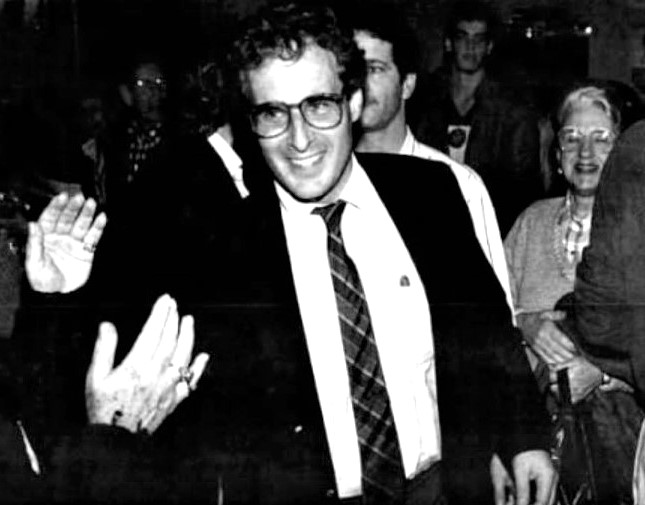
Up & Away — Adam Schneider celebrates his first ever victory in Long Branch politics, November 1989. The 34-year-old attorney won a city council seat in a special election (ousting an incumbent by 2 to 1 via 6,700+ city voters). Elected the city’s mayor in May 1990, Adam worked hard for safe streets, stable taxes, open land, competent government, and a friendly community until his defeat at the polls in May 2018. In all he served seven terms as Long Branch chief executive. For his three decades of political dominance — no other mayor in city history is his equal.
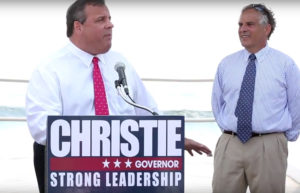
Boardwalk Politics — Mayor Adam Schneider (r) after endorsing Gov. Chris Christie for re-election in New Jersey, June 2013. The Republican Christie won that fall and even carried Long Branch with nearly 55% of the city vote.
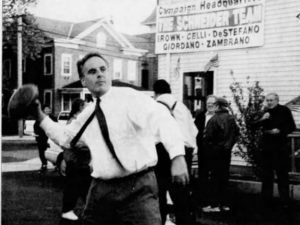
City’s QB — Mayor Adam Schneider tosses a football while waiting for elections results (he won a fourth term), 2002. The mayor was the city school’s #1 sports fan for decades — a fixture at all the games.
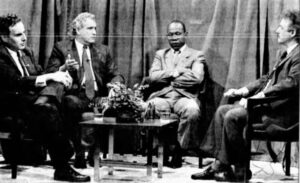
New Leadership — 1990 Long Branch city mayor’s race debate: Candidates from left: Adam Schneider, Bill George and Reuben Williams. At right is the moderator, Michael Booth, Atlanticville News publisher, April 1990. The following month Schneider would capture the first of his seven four-year mayor terms.
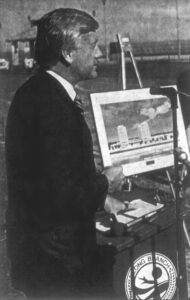
Digging In — Mayor Philip Huhn at ground-breaking ceremony for the new Ocean Place Hilton Hotel on Ocean Blvd, Red Bank Daily Register, November 1988. “Long Branch is first and foremost a family city,” said Mayor Huhn to the Red Bank Daily Register during his 1986 re-election campaign; he won with 82% of the city vote.
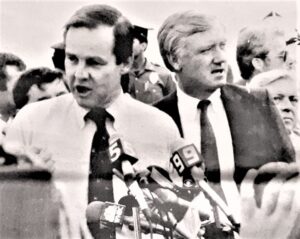
The Day After — Governor Thomas Kean and Mayor Phil Huhn after touring the Long Branch pier fire, June 1987.
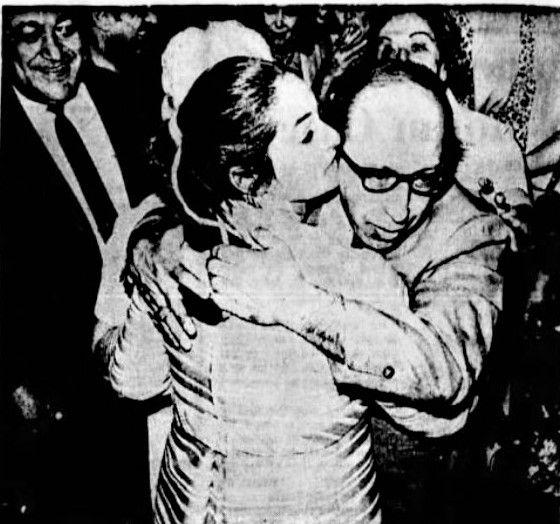
First of Three — Henry R. Cioffi hugs his wife Jean upon being elected mayor of Long Branch, May 1970. Known as “Skip,” he was won three terms serving as city leader until 1982. Mayor Cioffi was “a man of Napoleonic height and pride,” according Red Bank Daily Register reporter Andrew Sheehan in May 1982 and “never at a loss for words,” according to the 1969 Long Branch Daily Record. The former city councilman, US Marine, and Ivy League finance graduate died in 2020.

US Congressman James Howard (l) presents Long Branch Mayor Henry Cioffi (r) with a print of the famous Winslow Homer painting of the Long Branch bluffs, 1973.

Mayor Paul Nastasio, Jr. (seated) and the Long Branch City Council, Red Bank Daily Register, July 1966. A city public servant for some 40 years, Nastasio was first elected a city commissioner in May 1936 and served 12 years leading the public works department. He was a mechanical engineer at Fort Monmouth. The city native and 1925 Chattle High School grad, died December 1996. Nastasio had beaten Edgar Dinkelspiel among 8,700 city voters with 52% of the vote.

Kids Matter — Mayor Paul Nastasio, Jr. (r) with city officials: Merrick Tomanie (city recreation director) and Wilbert Russell (city housing authority commissioner) at Garfield Court, Red Bank Daily Register, July 1967.

Law & Order — Paul Kiernan, 1940s. Twice mayor of Long Branch (1944-1948 and 1960-1961) while serving five terms on the city commission. Once considered Monmouth County’s “Mr. Democrat,” he was also elected to five terms as county sheriff (1965-1980). He managed the family’s successful real estate/insurance business. The city native and 1925 graduate of Chattle High School died in May 1989.

’61 Winners — for Long Branch City Council. From left: Dr. Alexander Vineburg, Edgar Dinkelspiel, Thomas McClintock and Milton Untermeyer. Seated is City Clerk Santia Camassa. Long Branch Daily Record, May 1961. McClintock would be selected mayor — the youngest in city history at age 34. It was the first election under the new city council-manager form of government. Both Vineburg and Untermeyer would serve as mayor later in the decade.

He was a United States Senator for NJ — in between terms as Long Branch mayor, December 1903. A Democrat, he died in October 1910 at age 76.
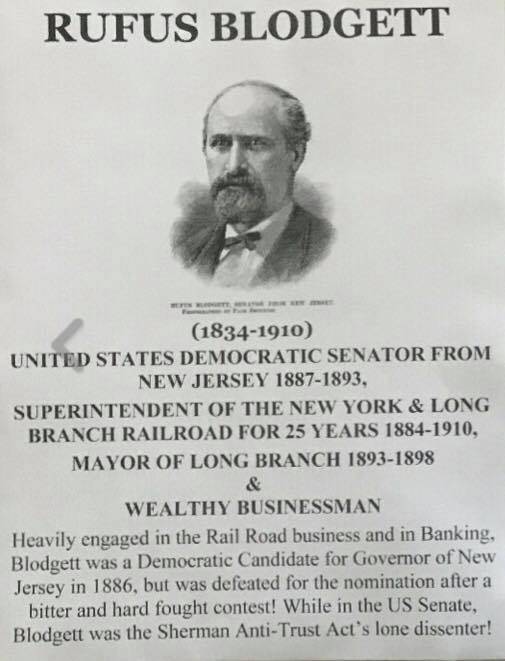
Big Power: Long Branch’s Mayor & US Senator. The last mayor of Long Branch before the city incorporated in 1904, he was born in New Hampshire in October 1834.
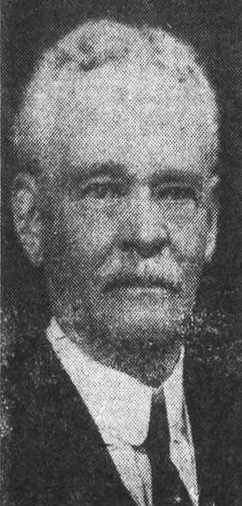
Charles Asa Francis had a sterling resume: Starting out as a Long Branch commissioner in 1884, he also served as mayor (1905-1906), board of education member for over 25 years and postmaster. He was an elected member of the NJ State Assembly and NJ State Senate (and its president in 1902). In 1905 he was elected Monmouth County Sheriff and appointed the Monmouth County Treasurer in 1909. He was partners in a successful North Long Branch grocery store, Hoyt & Francis. Born in Howell Twp. in 1855, he moved to Long Branch in 1873. He died in April 1934.
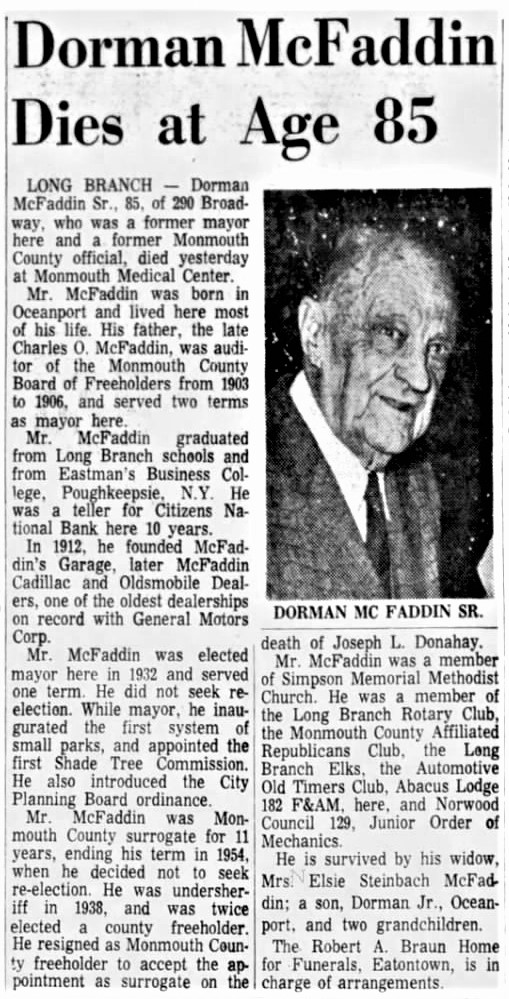
Obituary for Dorman McFaddin. Asbury Park Press, September 1967. He was mayor of Long Branch, Monmouth County Surrogate and Freeholder, and McFaddin Motors founder.

Mayor Thomas R. Woolley. Twice a Long Branch mayor in the late 19th century, he died in 1917 having held nearly every important city office — board of education president, fire chief, treasurer, and tax collector among others. He also was a county freeholder.
Where they worked …


